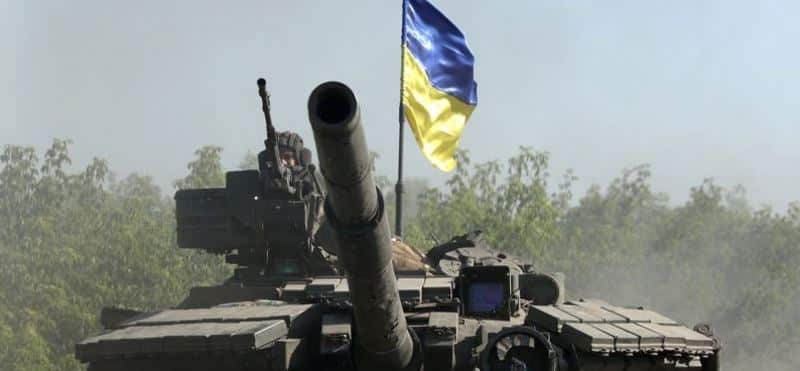The retreat of Ukrainian troops from Severodonetsk city in the Luhansk Oblast of the country is a pivotal moment in the ongoing conflict. The Russian forces are now almost in total control over the Luhansk region. The latest reports from front lines say Russian forces entered the last remaining city of Lysychansk in Luhansk on June 25.
In a briefing today, Russian Ministry of Defence announced in Moscow: “On June 25, the cities of Severodonetsk and Borovskoye, the settlements of Voronovo and Sirotino passed under control of the Lugansk People’s Republic. The localities liberated… are inhabited by about 108,000 people. Total area of the liberated territory is about 145 square kilometres.
“Success of the Russian army… considerably diminishes the morale and psychological condition of the Ukrainian army personnel. In 30th Mechanised Brigade deployed near Artyomovsk, there are mass cases of alcohol abuse, drug use and unauthorised abandonment of combat positions.”
However, peace is a long way off — several months away, perhaps. In the speech by Russian President Vladimir Putin last week at the SPIEF in St. Petersburg, he made no references to peace negotiations. Putin hardly referred to the fighting.
Meanwhile, three highly provocative moves by the opposing side within the past week are significant markers indicating that the conflict may aggravate. If the missile strike at a Russian oil rig in the Black Sea has been an act of provocation, the US supply of High Mobility Artillery Rocket Systems (HIMARS), a powerful long-range weapon system is intended as a potential game changer that can help Kiev turn the tide of the conflict, and, third, the bizarre move by Lithuania to block Russia’s rail transit to Kaliningrad is a reckless escalation of tensions.
On the arrival of the HIMARS, Ukraine Defence Minister Oleksiy Reznikov ecstatically wrote wrote on Twitter on Thursday, “HIMARS have arrived to Ukraine. Thank you to my colleague and friend @SecDef Lloyd J. Austin III for these powerful tools! Summer will be hot for russian occupiers. And the last one for some of them.”
Washington claims it has received assurances from Kiev that HIMARS would not be used to attack Russian territory. Moscow has warned it will attack targets in Ukraine that it has “not yet been hitting” if the West supplies longer-range missiles to Ukraine for use in high-precision mobile rocket systems.
The Lithuanian move is a blatant violation of international law and Vilnius would only have acted on the basis of prior consultation with the US and NATO to test the Russian reaction. Kaliningrad is a major Russian base with nuclear missiles, where its Baltic Fleet is headquartered, apart being the only Russian port on the Baltic that is ice-free throughout the year. Evidently, there are some insane fellows in the NATO camp who are itching to climb the escalatory ladder.
For Russia too, there is “unfinished business” ahead insofar as it holds roughly the same amount of territory in Donetsk only as the separatists controlled in February before the special military operation began. Now, seizing the administrative territories of the Donbass is only Moscow’s minimal goal. There is going to be a sprawling battlefield in the next phase, stretching from Kharkiv in the northeast to Mykolaiv and Odessa in the southwest. Much fighting lies ahead.
The New York Times reported that “Pentagon officials expect that the arrival of more long-range artillery systems will change the battlefield in Donetsk.” Gen. Mark A. Milley, the chairman of the US Joint Chiefs of Staff told reporters recently, “If they (Kiev) use it properly, practically, then they’re going to have very, very good effects on the battlefield.”
The Russian military approach doctrinally is centred on attrition warfare, which aims to grind the way toward incremental territorial gains. Therefore, the advantage goes to the side which has greater staying power on the battlefield. In a sustained war of attrition, one military is ultimately going to be depleting the capability of the other. This is where the fault lines in the western unity come into play if the current traces of “war fatigue” in Europe turns into “solidarity fatigue.”
Ukraine’s ability to shift the military balance depends critically on sustained military support from the US and other European countries. That, of course, hinges on political will and cohesiveness of the western allies. As for Russia, it is not only committed to a protracted war but also has the capacity to sustain it.
Unlike the case with Ukraine, Russia is not dependent on any other country for boosting its military capability or training and advising its military. Also, historically speaking, a defining characteristic of the Russian military is its incredible endurance and ability to sustain prolonged attrition.
The US is still betting that the Russian economy cannot hold out for a long time, since the full impact of sanctions and export controls is yet to be felt. In this calculus, the rebound of the ruble currency is seen as largely due to the strict government controls on capital flows and plummeting imports into Russia. Equally, the US has convinced itself that the restrictions on technology exports to Russia will gradually stunt the growth of its industries. Thus, the focus of the G7 summit in Germany currently under way (June 26-28) is on new plans to further “tighten the screws” on Russia’s economy.
But not much Russian budget data is available to make such daring assumptions and it is even harder to quantify how much Moscow is spending on the war in Ukraine. Certainly, there is no evidence to suggest that Kremlin’s ability to finance the war effort is coming under pressure from sanctions.
While President Biden boasted in March that sanctions were “crushing the Russian economy” and that “the ruble is reduced to rubble,” the exact opposite has happened. Russian oil revenues have set new records and the ruble hit a 7-year high this week against the dollar. Expert opinion is also that Russia’s financial system is back to business as usual after a few weeks of severe bank runs.
Going forward, Biden must retain control over the Congress in the midterm elections in which Republicans are sure to capitalise on the rising cost of living. As for Europe, cooler temperatures in the coming months will raise alarms about energy shortages as Moscow has cut down natural gas supplies to Europe, which would aggravate the economic pressure they now are experiencing.
Therefore, the big question is, whether the desire to resist Russia will be sustainable as the war itself grinds away. The matrix has changed. After all, Biden uttered the following about Putin as recently as in end-March: “For God’s sake, this man cannot remain in power.” But in 3 months’ time, today, Biden only says he is striving to help Ukraine negotiate optimally with Russia for a settlement. Here too, Biden needs to make sure Russia is losing ground, while also constantly weighing that new weapons do not escalate the conflict too fast.
Admittedly, Biden is under little political pressure at home to back away. And the crack in western unity is, arguably, not to be construed as amounting to anything like a rift in the fundamental strategy towards Russia and the Ukraine conflict. That said, the bottom line is that this is also a perilous moment for the global economy.
Post-pandemic economic recovery, supply-chain disruptions, rapid price increases, infrastructure investment, trade practices, global oil prices, world’s food supply, recession — these issues surely impact the western leaders’ standing in the polls. It means economic and political pain is coalescing.
Reprinted with permission from Indian Punchline.



